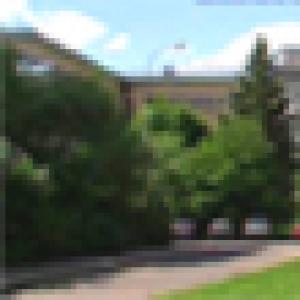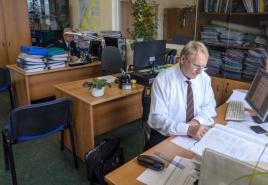What region do we live in? Where is the best place to live in Russia? Top best cities in the Russian Federation
Moscow has been the most attractive city not only for residents of our country, but also for foreigners for many years and even centuries. It attracts with its grandeur, unique beauty of architecture and, of course, history. In general, the exact time of the founding of our capital is still unknown, but in historical documents it is customary to consider 1147 as its birthday. It was at this time that in one of the oldest chronicles, for the first time, a city with a similar name Moskov was found, where Yuri Dolgoruky met with his like-minded people and friends. And only in the XIII century this city will become the center of the principality, and then the main city of our Motherland.
Moscow today
Capital of Russia. It is located on an area of more than two and a half thousand square kilometers. Moscow is considered one of the most densely populated cities in both Russia and Europe. At the beginning of 2012, the number of residents of the capital was 11,612,943 people. Since 1991, Moscow has been divided into twelve administrative districts, which in turn are divided into one hundred and forty-six main districts. The status of each district is determined by the Charter of the capital, as well as acts of the mayor and government.
The capital of our country performs an important function of a transport interchange, which includes 9 railway stations, 6 airports, 3 ports that have access to the oceans. Being the transport center of Russia, Moscow is experiencing more and more serious transport problems. We understand that they are associated with an increase in the number of vehicles (by 2012, the number of cars in the capital reached 3.5 million vehicles) and a significant lag in the pace of road construction. The main salvation for residents and guests of the city is the subway, which has been operating since 1935. Now the metro has 182 stations, 12 lines, which stretch for 301.2 km. In 1990, the construction of new stations stopped due to lack of proper funding. Today, construction is being resumed, and by 2015 the Moscow government promises to open more than twenty new stations.
Graphic representation of the symbols of the city of Moscow
Moscow streets
Moscow is not only a capital with many districts, a strategic object, but also a city with its own centuries-old unique history, which is preserved in monuments of architecture and art to this day. Of particular interest to travelers and simply inquisitive people are the streets that keep the secrets of many generations. To date, there are 3,500 interesting streets and small alleys, wide avenues and vast squares, mysterious embankments, endless highways and driveways. They stretch for many kilometers. It is known that if the streets are built in one line, then we will get a straight line that exceeds the distance from Moscow to Berlin. Of course, the most famous Moscow square for us from early childhood is Red Square, which is located on the east side of the Kremlin. Probably every Russian has been to this place at least once in his life, or is going to visit. Embankments located in the central part, near the Moskva River, are considered other important sights. These are Andreevskaya, Moskvoretskaya, Kremlin, Sofia, Balchug, Bersenevskaya and Luzhnetskaya embankments, the name of each of them keeps its own history. Many streets remind us of the names of famous people who have made an invaluable contribution to the development and prosperity of Moscow. The development of the city does not stand still, so many streets have been changed and renamed, some have completely disappeared, and new, modern and more versatile ones have appeared in their place.
If netizens are interested in something about my hometown, I can talk for a long time and in detail. And the question of which region it belongs to, oddly enough, arises for many. So, I'm telling.
What region is Moscow
Our capital is a city so large and significant that recognized as an independent region of Russia.
Only three cities in the Russian Federation are separate regions, the second and third are and. The so-called federal cities.
More than 12 million people live in Moscow- this is not even close anywhere else in our country. The city is so huge and self-sufficient that the residents jokingly wondered for a long time “Is there life outside the Moscow Ring Road?” Naturally, they are talking about the city ring road. Apparently, in order to slightly clarify this issue, the authorities in 2011-12 annexed the castle territories to Moscow, thanks to which the city increased by almost 2.4 times! So seriously and quickly the area of the capital has never expanded before. This raised Moscow to 6th place in the ranking of the largest cities in the world by area, and the Moscow region included a whole list of cities, villages and even farms.

Which federal district includes the Moscow region
Russia consists of eight federal districts - large associations of Russian regions. Moscow is part of the Central District, and she is his official center. It also includes Kaluga, Tver, Ryazan, Smolensk, Tambov and a number of other regions.
And here not included in the Moscow region These are two different regions of Russia.

What is the number of the region Moscow
In the Russian Constitution, in Article 65, all the regions of the country are listed. Traditionally, this sequence was oriented as the official numbers of the regions, including when choosing car codes.
What number in the constitution has the Moscow region? For a long time, the capital was in 77th place, which was fixed in many car numbers registered here. But when Crimea and Sevastopol were included in Article 65, Moscow moved to 78 position, where it currently resides. But it was the 77th number that remained as one of the automobile codes of the capital, the 78th among them did not appear.
And I would like to add on my own on the question of what region. He too densely populated by people from completely different places. And they come here more often from where they live quite poorly. It is noisy, bustling, but there is almost everything.
To the question what is a region? How can I find out what region I live in? given by the author Nadya nosova the best answer is Zayandexi
Answer from Yotiwi Perazo[newbie]
Region of the country, there are also regions, krais, autonomous districts.
On the number on the car above the flag, what are the numbers?
Answer from Vova Adamov[newbie]
Region-Province of the country or region of the province
You can find out in different ways, but here's a list of Russian regions
01 Region code Republic of Adygea
02 Region code Republic of Bashkortostan (also 102)
03 Region code Republic of Buryatia
04 Region code Republic of Altai
05 Region code Republic of Dagestan
06 Region code Republic of Ingushetia
07 Region code Kabardino-Balkar Republic
08 Region code Republic of Kalmykia
09 Region code Karachay-Cherkess Republic
10 Region code Republic of Karelia
11 Region code Komi Republic
12 Region code Republic of Mari El
13 Region code Republic of Mordovia
14 Region code Republic of Sakha (Yakutia)
15 Region code Republic of North Ossetia
16 Region code Republic of Tatarstan (also 116)
17 Region code Republic of Tyva (Tuva)
18 Region code Udmurt Republic (also 118)
19 Region code Republic of Khakassia
20 Region code Chechen Republic (old numbers)
21 Region code Chuvash Republic (also 121)
22 Region code Altai Krai
23 Region code Krasnodar Territory (also 93)
24 Region code Krasnoyarsk Territory
25 Region code Primorsky Krai (also 125)
26 Region code Stavropol Territory
27 Region code Khabarovsk Krai
28 Region code Amur region
29 Region code Arkhangelsk region
30 Region code Astrakhan region
31 Region code Belgorod region
32 Region code Bryansk region
33 Region code Vladimir region
34 Region code Volgograd region
35 Region code Vologda Oblast
36 Region code Voronezh region
37 Region code Ivanovo region
38 Region code Irkutsk region (also 138)
39 Region code Kaliningrad region
40 Region code Kaluga region
41 Region code Kamchatka region
42 Region code Kemerovo region
43 Region code Kirov region
44 Region code Kostroma region
45 Region code Kurgan region
46 Region code Kursk region
47 Region code Leningrad region
48 Region code Lipetsk region
49 Region code Magadan region
50 Region code Moscow region (also 90, 150)
51 Region code Murmansk region
52 Region code Nizhny Novgorod region (also 152)
53 Region code Novgorod region
54 Region code Novosibirsk region (also 154)
55 Region code Omsk region
56 Region code Orenburg region
57 Region code Oryol region
58 Region code Penza region
59 Region code Perm region (also 159)
60 Region code Pskov region
61 Region code Rostov region (also 161)
62 Region code Ryazan region
63 Region code Samara region (also 163)
64 Region code Saratov region (also 164)
65 Region code Sakhalin region
66 Region code Sverdlovsk region (also 96)
67 Region code Smolensk region
68 Region code Tambov region
69 Region code Tver region
70 Region code Tomsk region
71 Region code Tula region
72 Region code Tyumen region
73 Region code Ulyanovsk region (also 173)
74 Region code Chelyabinsk region (also 174)
75 Region code Chita region
76 Region code Yaroslavl region
77 Region code Moscow (also 97, 99, 177, 197, 199)
78 Region code St. Petersburg (also 98)
79 Region code Jewish Autonomous Region
80 Region code Aginsky Buryat Autonomous Okrug
81 Region code Komi-Permyatsky Autonomous Okrug
82 Region code Koryak Autonomous Okrug
83 Region code Nenets Autonomous Okrug
84 Region code Taimyr Autonomous Okrug
85 Region code Ust-Orda Buryat Autonomous Okrug
86 Region code Khanty-Mansi Autonomous Okrug
87 Region code Chukotka Autonomous Okrug
88 Region code Evenk Autonomous Okrug
89 Region code Yamalo-Nenets Autonomous Okrug
Answer from Alexander YouTube[newbie]
when you go to your rg it will be displayed (Region: [your private] your private will be highlighted in green. And if to another then red.
Codes of subjects of the Russian Federation on Wikipedia
Codes of subjects of the Russian Federation
Districts of the constituent entities of the Russian Federation on Wikipedia
Check out the wikipedia article on Districts of subjects of the Russian Federation
|
The share of the largest cities with a population of more than 1 million people in the socio-economic indicators of Russia in 2002, % (p. 11)
Socio-demographic indicators of rural areas in various regions of Russia in 2002-2003. (page 14)
The share of individual entities in the total GRP of Russia, % (p. 35)
Structure of budget expenditures of the leading and outsider regions in 2003, % (p. 38)
|
||||||||||||||||||||||||||||||||||||||||||||||||||||||||||||||||||||||||||||||||||||||||||||||||||||||||||||||||||||||||||||||||||||||||||||||||||||||||||||||||||||||||||
The book is a continuation of the Internet project "Social Atlas of Russian Regions". It examines the trends in the social development of Russian regions in the transition period, shows the influence of resettlement factors, the demographic and economic situation. A typology of regions of the Russian Federation according to the level of socio-economic development and ratings of regions built on the basis of integral indices are proposed. Particular attention is paid to the portraits of individual Russian regions, which give an idea not only of the diversity of social problems and interregional differences, but also of the strongest intraregional disproportions in development.
The publication is addressed to researchers, managers, teachers and students, as well as to everyone who is interested in social issues in its regional dimension.
Introduction
Part 1. Factors and trends in socio-economic development
1.1. Settlement and ethnic structure (Alekseev A.I., Zubarevich N.V., Safronov S.G.)
Natural conditions and population of the territory
Urban and rural settlements
ethnic structure
1.2. Demographic situation and migration (Andreev E.M., Alekseev A.I., Zubarevich N.V.)
Reproduction of the population of Russian regions
2002 census results: regional dimension
Demographic indicators of social processes
Migrations
Sex and age structure of the population
1.3. Economic development of regions (Zubarevich N.V.)
Factors of regional inequality
Industry
Agriculture
Service sector
Impact of globalization: investment, trade, information
Economic inequality of regions
budget policy
1.4. Regional labor markets (Zubarevich N.V.)
Economic activity and employment
Structural changes in employment
Employment in small business
Working pensioners
Gender differences in employment
Working conditions
Unemployment
1.5. Socio-economic situation of households (Zubarevich N.V.)
Reasons for Growing Regional Income Disparities
Dynamics of cash income during the period of economic growth
Purchasing power of income
Income structure, wages and pensions
Gender income differences
Indirect indicators of material security
Poverty rate
Social transfers
Monetization of benefits
1.6. Social services: education, healthcare, housing and communal services (Zubarevich N.V.)
Health status and healthcare
Education
Housing and communal services
2.1. Socio-economic typology of regions (Zubarevich N.V.)
2.2. Human Development Index (Zubarevich N.V.)
2.3. Life quality index (Zubarevich N.V., Madyuskin P.N.)
2.4. Innovation index (Borisova E.I., Zubarevich N.V.)
2.5. Democracy index (Petrov N.V., Titkov A.S.)
Part 3. Portraits of regions
3.1. Belgorod region (Lapteva E.A.)
3.2. Kursk region (Chistyakov P.A.)
3.3. Moscow region (Mahrova A.G.)
3.4. Tver Region (L.P. Bogdanova, A.S. Shchukina)
3.5. Tula region (Zubarevich N.V.)
3.6. Republic of Komi (Zubarevich N.V.)
3.7. Vologda region (Zubarevich N.V.)
3.8. Novgorod region (Safronov S.G.)
3.9. Republic of Ingushetia (Krasnoslobodtsev V.P.)
3.10. Stavropol Territory (Belozerov V.S., Shchitova N.A., Turun P.P., Eshrokov V.M., Panin A.N.)
3.11. Astrakhan region (Nefedova T.G.)
3.12. Rostov region (Zubarevich N.V.)
3.13. Republic of Tatarstan (Safronov S.T., Zubarevich N.V.)
3.14. Perm Region and Komi-Permyatsky Autonomous Okrug (Zubarevich N.V.)
3.15. Samara region (Zubarevich N.V.)
3.16. Khanty-Mansiysk Autonomous Okrug - Yugra (Zubarevich N.V.)
3.17. Republic of Altai (Safronov S.G.)
3.18. Republic of Buryatia (Lapteva E.A.)
3.19. Krasnoyarsk Territory (with Taimyr and Evenk Autonomous Okrugs) (Borisova E.I., Zubarevich N.V.)
3.20. Novosibirsk region (Lapteva E.A.)
3.21. Republic of Sakha (Yakutia) (Zubarevich N.V.)
3.22. Khabarovsk Territory (Lapteva E.A.)
Conclusion
Application
Russia is not only a huge and hospitable country, but also a place where absolutely everyone can find an ideal home for themselves. Where is the best place to live in Russia? Our country is the largest in the world in terms of territory, so there are plenty to choose from. In fact, each person values his own in everyday life, so it’s basically impossible to name a perfect place to live. Although experts still found a way to determine in which region of our country it would be most comfortable for a person who appreciates such factors as: the level of medical care, purchasing power, business development and average income. Thanks to this simple approach, the experts managed to determine the best cities in our country.
10th place. Tyumen
The city of Tyumen ranks tenth in the top 100. As you know, Siberia is the very region where the citizens of our country did not want to live before because of the harsh and unpredictable climate. But over the years, the latter has changed significantly - now it is rare to find a cold and long winter in these parts. Today, the city of Tyumen is considered not only the most beautiful place where it is better to live in Russia, but also the oil and gas capital of our country. Only 400 km separates it from Kazakhstan, while almost the entire transit trade of Siberia with China passes through the city. It is here that the largest amount of oil in our country is extracted and produced. And that is why things are so good in Tyumen with wages and so difficult with the environmental situation. It is worth noting that the previously small settlement is growing at a tremendous speed, today the population of Tyumen is about 680 thousand inhabitants, most of whom are Russians, despite the fact that the city is considered multinational.

9th place. Obninsk
Where in Russia is it better to live and work? This question interests many citizens of our country today, but not those who live in Obninsk. Of course, today this city occupies only the 9th position in the top hundred cities of the Russian Federation, but at the same time it has amazing qualities. The Kaluga region has always been different from other regions and regions of our country, and the city of Obninsk became famous for being recognized as the first "science city" of Russia in 2000. It was here that the very first nuclear power plant in the world was built, which began its work back in 1954. It is not for nothing that this particular city in the Russian Federation is considered the most “smart”, because more than 10 research centers are located on its territory. At the moment, about 107.3 thousand people live in Obninsk, annually this number increases by 1000 new citizens. But the most important thing is that most of the population are highly educated people. If we talk about the climate, then here for the most part cold and snowy winters with wet and warm summers prevail.
8th place. Ekaterinburg
Ekaterinburg will appeal to those people who prefer to live constantly on the move and in a large city. There is no need to talk about calmness in Yekaterinburg, life in this locality is constantly in full swing. It is worth saying that this city is divided into several large areas, which seem to be delimited by an invisible line. Moreover, each of these regions will differ significantly from its neighbor. It is not surprising that Yekaterinburg was included in the list of cities where it is better to live in Russia, because back in 1967 it received the title of a million-plus city, and since 2000 its population has been steadily growing. Despite the fact that women predominantly live here (according to statistics, there are 9% more of them than men), the city still remains a large industrial center, as it was originally founded. About 200 largest enterprises accommodate a huge number of workers every day. It should be noted that the average salary in Yekaterinburg is about 30,000 rubles, which is 22% more than the average salary in our country. The climate in this city is temperate, but sudden temperature changes are common.

7th place. Podolsk
The southern direction of Moscow is the place where the city of Podolsk is located, which today proudly occupies the 7th step in the list of leaders. Where in Russia is it better to live and work? Of course, in Podolsk, because it is in this city that one of the highest wages in our country is paid. And given the fact that it is here that the railway and the highway run towards the Crimea, it can be assumed that in the future the city will develop even faster. The climate in the village is temperate and is distinguished by its mildness. By the way, an interesting fact: it is here that the hour meridian passes, therefore, having moved from the western part of the city to the eastern one, you can find yourself an hour earlier or later. Today, about 240 thousand people live here, although the number is almost constantly increasing. Geographically, this city is divided into 14 districts, so even a guest can easily navigate here. The infrastructure of Podolsk is rich, but even if something is missing, this lack can easily be compensated for by the proximity of Moscow. In this city, there is no problem finding a job, despite the fact that it is filled with new residents daily. And wages, given that the city is located close to the capital of Russia, are quite high.

6th place. Khimki
Where pensioners live well in Russia is in Khimki. And the point is not at all that there are high pension payments or there are certain benefits for this category of the population. Elderly people will like the fact that the population mainly lives here, who is used to working and knows such a word as responsibility. Historically, it so happened that the citizens of the city worked mainly in factories and were accustomed to comply with all the necessary rules so that the work of each worker was appreciated. The name of the city itself comes from the Khimka River, which flows nearby. Despite the fact that Khimki is located on the northwestern exit from Moscow, it is quite comfortable to live here. The infrastructure is well established, the cost of utilities is low, courtyards and lanes are well maintained and clean, the city has a huge number of kindergartens and schools. In general, as noted above, this settlement will appeal to pensioners who appreciate a calm and measured life in a large city. Although there are drawbacks, such as traffic jams, which have become almost an integral part of the life of Khimki residents.
5th place. Irkutsk
An hour's drive from Lake Baikal is the beautiful city of Irkutsk, which in 2014 ranked fifth in the ranking of the best places to live in Russia. This city is considered not only densely populated, but also multinational. About 613 thousand people live on its territory, among them: Russians, Ukrainians, Germans, Belarusians, Buryats, Poles and others. The Irkutsk people are a secretive and strict people, which is what real Siberians are considered to be, but, perhaps, it is precisely because of this that the city has flourished so much over the past few decades. Wages in Irkutsk are low, but this does not prevent citizens from working productively every day. And a huge number of factories and enterprises provide the inhabitants of Irkutsk with an endless number of jobs. Visually, it is divided into two parts by the Angara River, which flows through the entire city. A distinctive feature of the settlement from other large cities of our country is that in Irkutsk private sectors are located even in the central part, which has long been a rarity. The climate here is quite severe, so there are often snowy winters and heavy rains in spring and autumn, which damage the infrastructure.

4th place. Domodedovo
It is not surprising that the experts had to work hard in order to determine the most comfortable cities in Russia, where it is better to live today. The city of Domodedovo began to be considered one of the best settlements in our country not so long ago. It is located south of Moscow and is practically surrounded by important highways. Winters are mild and summers are humid, which makes living in this area as comfortable as possible. Wages fluctuate within 36 thousand rubles, which, even considering the proximity of the region to the capital, is quite good. It is important to note that the ecological situation in the region is quite stable, and the population of the city is constantly growing. At the moment, about 108 thousand people live in Domodedovo, mostly able-bodied citizens (about 67%). The infrastructure in the city is complex, but at the same time it looks clean and well maintained. As in other cities of our country, here you can often get stuck in a traffic jam, and recently the situation with parking spaces has become more complicated. But otherwise, the city is ideal for those people who like comfort to live.
3rd place. Belgorod
The top three included Belgorod, which is famous for its standard of living throughout the country. It is the residents of Belgorod who know where it is better to live in retirement in Russia, because for the elderly it is simply impossible to find a place, except perhaps for the south, but the local climate, unfortunately, is not suitable for everyone. Belgorod is considered the cleanest region of our country, everything here is planted with trees and even drinking water is supplied from underground sources. The population today does not exceed 380 thousand people, although in the past few years the death rate has been higher in this region than the birth rate. Mostly the city is filled with Russians, but you can often meet people of other nationalities. As for work, there is a huge number of enterprises and factories here, and the region itself is famous for the wealth of its reserves in the bowels. The average salary is about 29 thousand rubles.
2nd place. Krasnodar

Where is it good to live in Russia? The reviews showed that one of the most attractive regions of our country is Krasnodar. However, there is absolutely nothing surprising in this, because the capital of the Kuban is famous for its fertility and generosity. The climate here is temperate, although sharp temperature drops occasionally occur. For example, summer in this region is getting hotter. The population of the city is a little over 800 thousand people, but if you take into account guest workers, then Krasnodar could long ago have been renamed into a million-plus city. Although he can receive this status in the next few years, given the fact that the birth rate almost constantly exceeds the death rate. Located on the Kuban River, the settlement is divided into four administrative districts. It is worth noting that there are practically no large factories here, but there are no interruptions in jobs in the city due to the huge number of private businesses and small manufacturing companies. The average salary is about 31 thousand rubles. Where is it better to live in the south of Russia? Of course, in Krasnodar!
1 place. Kaliningrad
Many Russians like the coastal cities of Russia. Where is it better to live if you choose a place from the list of settlements that are in this zone? In the first place in Russia today is the city of Kaliningrad, which is conveniently located almost in the very heart of Europe. Despite the fact that this settlement is located quite far from Russia, today many consider it the most successful and profitable region. About 450 thousand people live in Kaliningrad, and they are of very different nationalities. The history of this city is complex and ornate, but that is why here and today you can meet a variety of people. Despite being close to European countries, wages here are low, on average, about 25 thousand rubles. Basically, the city earns thanks to shipbuilding and oil production, and there are also quite a few private companies that provide Kaliningrad residents with work.
Crimea

Well, the last question that should be considered outside the rating is "where is it better to live on the Black Sea coast of Russia." Due to recent circumstances, so far not a single Crimean city has been included in the list of the best settlements in our country. But we can safely say today that this is not for long, because Crimea is a beautiful region that can boast of amazing cities. Most likely, in the next few years, experts will be able to appreciate all the charm of the Crimean coast and give at least one settlement in this region the proud status of the best city in our country!







